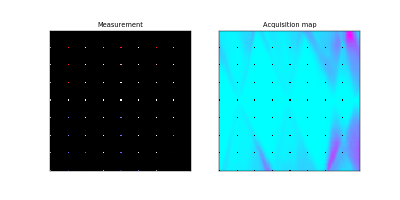Efficiently measuring a quantum device using machine learning
Scalable quantum technologies will present challenges for characterizing and tuning quantum devices. This is a time-consuming activity, and as the size of quantum systems increases, this task will become intractable without the aid of automation. We present measurements on a quantum dot device performed by a machine learning algorithm. The algorithm selects the most informative measurements to perform next using information theory and a probabilistic deep-generative model, the latter capable of generating multiple full-resolution reconstructions from scattered partial measurements. We demonstrate, for two different measurement configurations, that the algorithm outperforms standard grid scan techniques, reducing the number of measurements required by up to 4 times and the measurement time by 3.7 times. Our contribution goes beyond the use of machine learning for data search and analysis, and instead presents the use of algorithms to automate measurement. This work lays the foundation for automated control of large quantum circuits.
PDF Abstract
